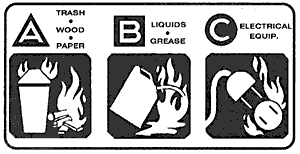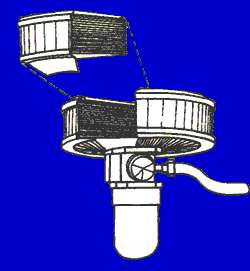
Treasure Island, FL 33706
"Must Have" Safety Equipment |
|||||||||||||||||||||||||||
| The government has established a body of rules for boat owners setting forth equipment and safety standards. It is important you have the required equipment on board your boat and know how to use it. This equipment is not sufficient to ensure your safety, and we recommend you augment this the following equipment with that listed in our "should have" and "nice to have" listings. | |||||||||||||||||||||||||||
|
Fire
Extinguishers and Safety Devices
|
|||||||||||||||||||||||||||
|
The following recreational boats are required to carry fire extinguishers:
|
A flammable liquid fire is the most serious type of fire on a boat. For that reason, extinguishers on recreational boats must be rated in the B class. Fire
Classification Markings on Fire Extinguishers Two common types of fire extinguishers are used on boats: ABC and BC.
|
||||||||||||||||||||||||||
|
Fire Extinguisher Maintenance Check the gauges on your extinguishers monthly to make sure they show a full charge. While the Coast Guard has no requirement for annual inspection, if your dry chemical extinguishers are of the rechargeable type it's a good idea to take them to a qualified fire extinguisher service for an annual inspection to ensure they are fully charged. |
|||||||||||||||||||||||||||
|
|||||||||||||||||||||||||||

